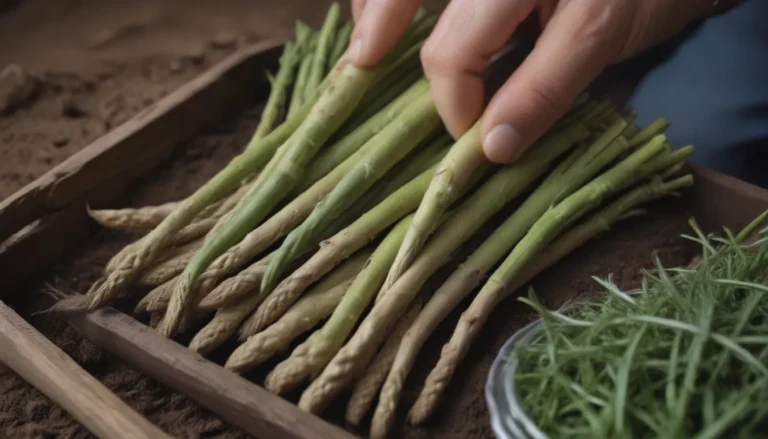The Ultimate Guide to Growing and Caring for Orange Jasmine

Have you ever wanted to fill your garden with the sweet aroma of orange blossoms? Orange jasmine is the perfect plant for you! Whether you live in a tropical climate or a colder region, you can enjoy the beauty of orange jasmine either outdoors or indoors. In this in-depth guide, we will explore everything you need to know about growing and caring for orange jasmine to help you cultivate a thriving and fragrant garden.
Overview of Orange Jasmine
Orange jasmine, also known as Murraya paniculata, is an evergreen shrub that can add a touch of elegance and fragrance to any garden. With oval, shiny leaves and highly fragrant flowers that resemble orange blossoms, this plant is a favorite among bees, birds, and butterflies. At maturity, orange jasmine can reach heights of eight to 12 feet with a round growth habit, making it a striking focal point in any landscape.
Benefits of Orange Jasmine
Not only does orange jasmine add beauty and fragrance to your garden, but it also offers several other benefits:
- Attracts pollinators such as bees, birds, and butterflies
- Low maintenance plant that is easy to care for
- Can be grown indoors in colder climates
- Provides year-round flowering, with clusters of flowers in the spring and bright berries in the summer
- Adds a tropical feel to your garden with its lush green foliage
Orange Jasmine Plant Care
To ensure that your orange jasmine thrives and continues to bloom year after year, it’s essential to provide the proper care and maintenance. From suitable planting conditions to regular watering and fertilizing, here are some important tips for caring for your orange jasmine plant:
Light
Orange jasmine plants require protection from direct sunlight, especially in hotter climates. Position your plant where it receives morning sunlight and afternoon shade, or in an area with dappled sunlight throughout the day to prevent leaf scorch.
Soil
Plant your orange jasmine in well-drained soil that is free of nematodes. The plant does not thrive in waterlogged soil, so make sure to improve drainage by adding organic materials such as compost or leaf mulch. Aim for moderately acidic, neutral, or slightly alkaline soil with a pH between 6.6 and 7.5 for optimal growth.
Water
Water your orange jasmine deeply whenever the top two inches of soil feel dry to the touch. Aim for about one inch of water per week, but adjust watering frequency based on the climate and the plant’s individual needs. Avoid letting the plant sit in soggy soil, as this can lead to root rot.
Temperature and Humidity
Orange jasmine thrives in humid conditions with temperatures above 40 degrees Fahrenheit. While it can tolerate lower humidity levels, it’s best to keep the plant in a warm and humid environment to promote healthy growth and flowering.
Fertilizer
Feed your orange jasmine plant every three to four weeks during the growing season with a fertilizer designed for evergreen plants. If your plant is in a container, opt for a balanced, water-soluble fertilizer formulated for shrubs. Follow the product label instructions for the correct dosage and application method.
Varieties of Orange Jasmine
Though cultivars of orange jasmine may not be readily available outside of its native range, there are alternative species that resemble orange jasmine’s fragrant flowers. Consider these two options for a similar bloom:
- Mock orange (Philadelphus coronarius)
- Mexican orange (Choisya ternata)
Pruning and Propagating Orange Jasmine
Pruning is an essential part of caring for orange jasmine, especially when the plant is young and growing rapidly. Here are some tips for pruning and propagating your orange jasmine plant:
Pruning
- Trim dead, damaged, or diseased branches as needed
- Avoid harsh pruning to maintain the plant’s shape
- Limit pruning to no more than one-eighth of the total growth per year
Propagating
Orange jasmine can be propagated from stem-tip cuttings in the spring or early summer for easy propagation and new plant growth.
Growing Orange Jasmine from Seed
While propagating orange jasmine from cuttings is the preferred method, you can also try growing the plant from seeds collected from your existing plant. Start seeds indoors to promote germination and healthy growth.
Potting and Repotting Orange Jasmine
If you choose to grow your orange jasmine in a container, make sure to repot the plant when it outgrows its current pot. Follow these steps for successful potting and repotting:
- Select a new pot that is at least two inches wider than the current container
- Trim dead foliage before transplanting
- Water the plant well to avoid damaging fragile roots during transplanting
- Backfill with potting mix and water thoroughly to settle the soil
Overwintering Orange Jasmine
For orange jasmine plants in regions below USDA zone 10, it’s essential to bring potted plants indoors for the winter. Place the plant in a bright room or on a sunny windowsill and maintain regular watering to ensure the plant survives the colder months.
Common Pests and Plant Diseases
While orange jasmine is relatively resistant to diseases, it may attract certain pests such as scale, whiteflies, and nematodes. Here are some tips for managing common pests and diseases:
- Scale: Prune infected branches and apply horticultural oil to control scale insects
- Whiteflies: Use neem oil or natural predators such as ladybugs to control whiteflies
- Nematodes: Purchase plants from reputable sources to prevent nematode infestations in your garden
How to Get Orange Jasmine to Bloom
If your orange jasmine plant looks healthy but fails to bloom, excessive nitrogen from lawn runoff may be the culprit. Encourage blooming by feeding the plant a fertilizer high in phosphorus to stimulate flower production.
In conclusion, orange jasmine is a beautiful and fragrant addition to any garden, whether you live in a tropical climate or prefer to grow it indoors. By following the tips and guidelines outlined in this comprehensive guide, you can create a thriving and vibrant garden filled with the sweet scent of orange blossoms. Happy gardening!





